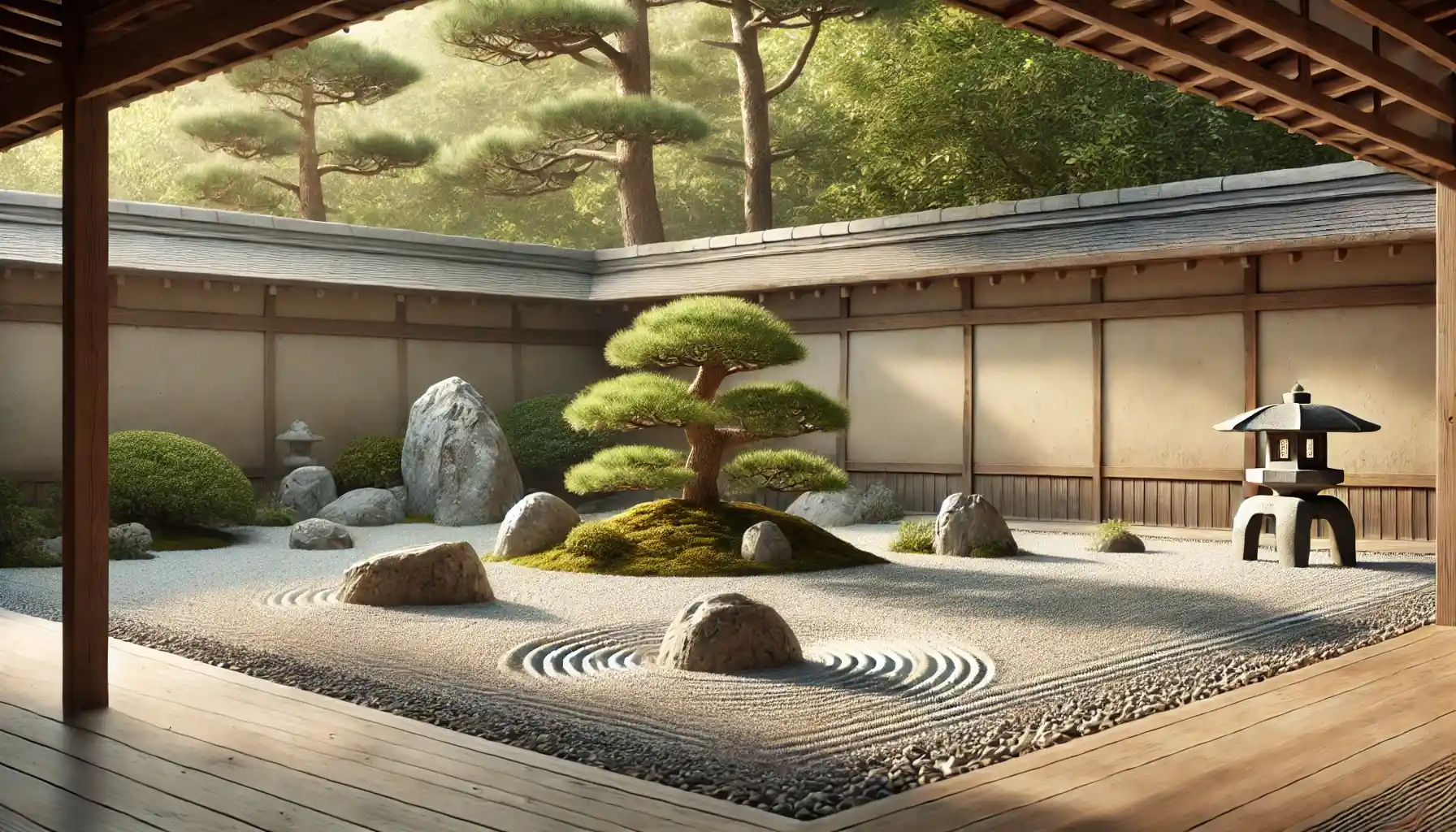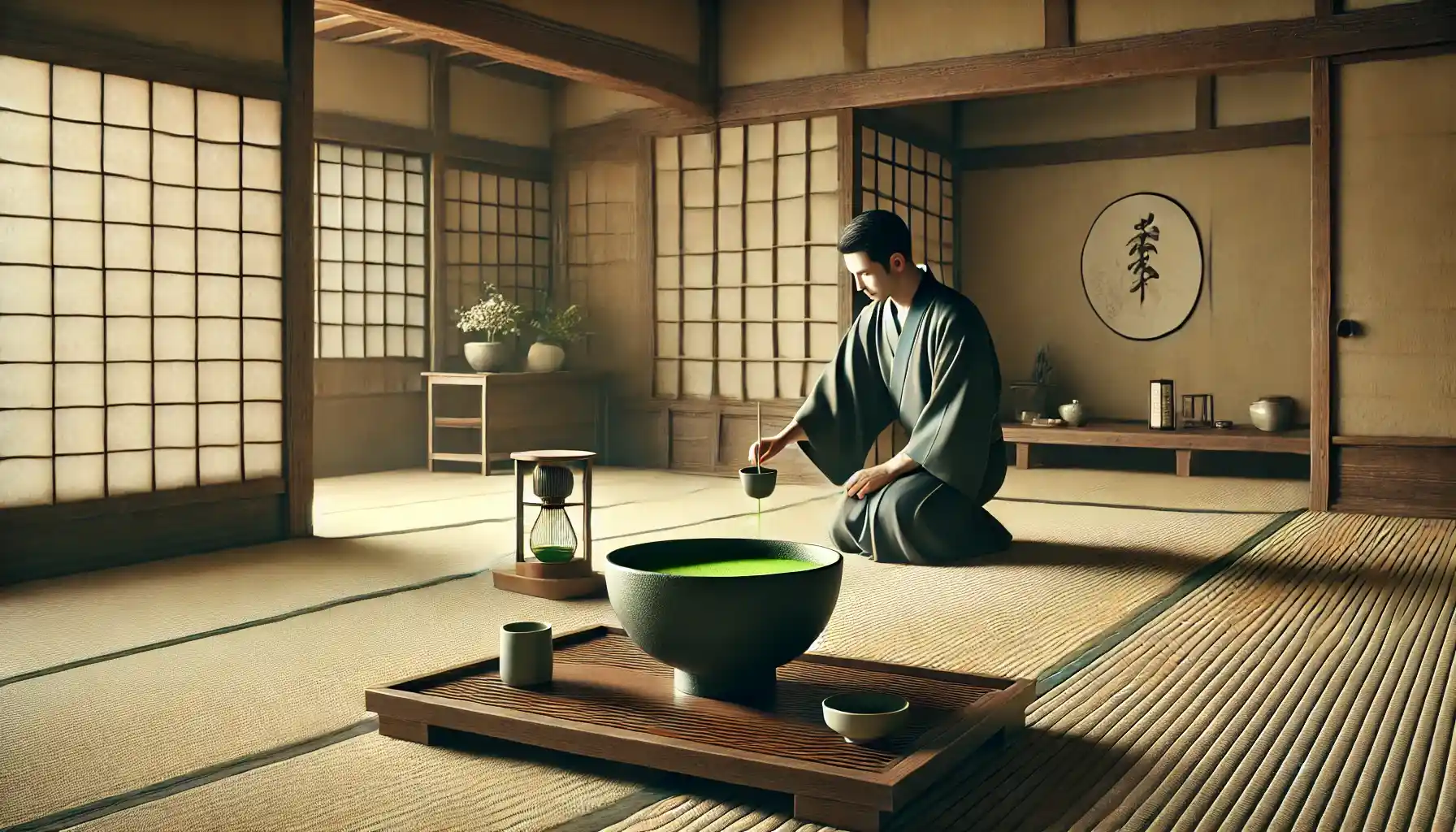The Art of Zen: Understanding Japan’s Unique Approach to Simplicity and Harmony
Historical Roots and Core Principles of Zen
Zen Buddhism, a cornerstone of Japanese culture, embodies a philosophy that emphasizes simplicity, mindfulness, and harmony. Originating from China and rooted in ancient spiritual traditions, Zen has profoundly shaped Japan’s cultural identity, influencing its art, architecture, and daily practices. In this exploration, we’ll delve into the historical origins of Zen and its foundational principles, uncovering how it has become an enduring element of Japanese life.
Historical Context: The Journey of Zen to Japan
The Origins of Zen in China
The roots of Zen Buddhism lie in Chan Buddhism, a school of Mahayana Buddhism that emerged in China during the 6th century. Chan emphasized direct experience and meditation over textual study, setting it apart from other Buddhist traditions.
Legend credits the Indian monk Bodhidharma with introducing Chan to China. His teachings prioritized the practice of meditation (zazen) as a means of directly experiencing enlightenment, bypassing complex rituals and dogma. This practical approach to spirituality resonated deeply with the Chinese and later Japanese audiences.
Zen’s Arrival in Japan
Zen Buddhism was introduced to Japan in the 5th century through cultural exchanges with China. However, it wasn’t until the 13th century that Zen began to flourish in Japan, largely thanks to influential figures like Eisai and Dogen.
Eisai: Often regarded as the founder of the Rinzai school of Zen in Japan, Eisai brought Chinese teachings and practices to Japan after his travels. He emphasized koans, or paradoxical riddles, as tools for breaking through conventional thinking and achieving enlightenment.
Dogen: A pivotal figure in Zen history, Dogen established the Soto school, which focused on the practice of shikantaza, or “just sitting.” This form of meditation encouraged practitioners to fully immerse themselves in the present moment, allowing insight to arise naturally.
By emphasizing simplicity and mindfulness, Zen seamlessly integrated into Japanese culture, influencing not only religious practices but also the arts, architecture, and daily life.

Core Principles of Zen Philosophy
Zen is not merely a set of practices—it is a way of being that challenges conventional thought and invites deeper connection with oneself and the world. Several fundamental principles define the Zen philosophy.
1. Denial of the Ego
At the heart of Zen is the understanding that the ego—the sense of a separate, independent self—is an illusion. This realization fosters compassion and a sense of interconnectedness with all beings.
Example: In a Zen context, achievements and possessions are not seen as extensions of the self. Instead, practitioners focus on transcending the ego to experience true freedom and harmony with others.
2. Interconnectedness
Zen emphasizes the unity of all existence. Every element, from a flowing river to a blooming flower, is interwoven within the fabric of life. Recognizing this interconnectedness promotes respect for nature and empathy for others.
Example: Traditional Zen gardens often include elements like rocks and water to symbolize the relationship between stillness and movement, reflecting nature’s inherent balance.
3. Mindfulness and Presence
Zen’s central practice, zazen, teaches individuals to be fully present in the moment. This mindfulness extends beyond meditation, influencing every aspect of daily life.
Example: Preparing a simple meal or tending to a garden becomes a meditative act, where the process itself is valued over the outcome.
4. Simplicity
Simplicity is both a practical and aesthetic principle in Zen. It involves removing unnecessary elements to uncover beauty and meaning. This concept is evident in Zen-inspired art, architecture, and rituals.
Example: In the tea ceremony (chanoyu), every movement is deliberate, reflecting the philosophy of doing less to achieve more—a hallmark of Zen simplicity.
The Aesthetic Impact of Zen
Zen’s principles extend beyond spiritual practice, deeply influencing Japanese aesthetics. The concept of wabi-sabi, or the beauty of imperfection and transience, is a direct reflection of Zen thought.
Examples of Wabi-Sabi in Zen Culture:
A handcrafted ceramic tea bowl, with its irregularities, represents natural beauty.
A weathered wooden temple signifies the passage of time, celebrated rather than hidden.
This appreciation of simplicity and imperfection teaches us to find contentment in the present, embracing life’s fleeting nature.
The Relevance of Zen Principles Today
Zen’s enduring appeal lies in its ability to address universal human experiences. In an age dominated by distractions and materialism, Zen offers a path back to mindfulness, connection, and simplicity. Whether through meditation, minimalist living, or mindful practices, Zen provides tools for finding peace and harmony in a chaotic world.
Zen in Japanese Life – Rituals, Art, and Architecture
Zen Buddhism is not confined to spiritual practice alone—it permeates every aspect of Japanese life, shaping rituals, art forms, and architectural design. By emphasizing mindfulness, simplicity, and a deep connection to nature, Zen manifests as a tangible expression of harmony. This section explores how Zen principles are seamlessly woven into Japanese daily life and culture.
Zen Rituals: Living Mindfully
Zen rituals exemplify the practice of mindfulness, transforming ordinary activities into meditative experiences. These rituals are designed to foster a sense of presence and reverence for the moment.
The Tea Ceremony (Chanoyu)
The Japanese tea ceremony is one of the most iconic expressions of Zen philosophy. Rooted in the principles of mindfulness, simplicity, and humility, the ceremony is a spiritual practice as much as it is an art form.
Key Elements of the Tea Ceremony:
Preparation: Every element, from the utensils to the tea itself, is meticulously prepared, symbolizing the importance of detail and care.
Harmony with Nature: Seasonal elements, such as flowers or decorations, reflect the transient beauty of nature.
Mindful Movements: Each gesture—pouring water, whisking tea—is deliberate and purposeful, creating a meditative rhythm.
Example: A host performing the tea ceremony immerses themselves fully in the process, creating a shared moment of tranquility with their guest.
Daily Mindfulness Practices
In Zen, mundane activities like cleaning, cooking, or walking are viewed as opportunities for meditation. By focusing entirely on the task at hand, practitioners cultivate presence and inner peace.
Example: Monks in Zen temples often begin their day with communal cleaning, seeing it as a practice of humility and mindfulness rather than a chore.
Zen-Inspired Art: The Beauty of Simplicity
Art in Japanese culture is deeply influenced by Zen, emphasizing imperfection, minimalism, and the process of creation over the final product.
Calligraphy (Shodo)
Zen calligraphy is a form of meditation in motion. Practitioners focus on each brushstroke, channeling their energy and emotions into the art.
Principles of Zen Calligraphy:
Spontaneity: A single stroke captures the artist’s state of mind in the moment.
Simplicity: The use of black ink on white paper reflects the Zen aesthetic of minimalism.
Imperfection: Irregularities in the brushwork are embraced as expressions of authenticity.
Example: A Zen calligrapher may write the character for “mu” (nothingness), symbolizing the essence of Zen philosophy.
Ikebana (Flower Arranging)
Ikebana, the Japanese art of flower arranging, embodies Zen’s focus on balance and harmony. Unlike Western floral arrangements, which emphasize abundance, ikebana uses minimal elements to create an elegant and meaningful composition.
Key Elements of Ikebana:
Asymmetry: Arrangements avoid symmetry to reflect the imperfect beauty of nature.
Mindful Placement: Each stem, leaf, and flower is placed with intention, symbolizing harmony between the natural world and human creativity.
Example: An ikebana arrangement may feature a single branch and a few flowers, evoking the simplicity and serenity of a Zen garden.
Zen Gardens: Landscapes of Tranquility
Zen gardens, or karesansui, are meticulously designed spaces that invite contemplation and reflection. These gardens embody Zen principles through their use of natural elements and minimalist aesthetics.
Key Features of Zen Gardens:
Rocks and Gravel: Represent mountains and water, symbolizing stability and flow. The raked gravel mimics the ripples of a pond or stream.
Minimalism: Every element is intentional, leaving space for interpretation and imagination.
Harmony with Nature: The garden’s design reflects the seasonal changes and the surrounding environment.
Example: The Ryoan-ji Temple garden in Kyoto is a renowned Zen garden where visitors sit in silence, contemplating the patterns and harmony of its design.
Purpose of Zen Gardens
Zen gardens are not meant to be walked through; instead, they are viewed as landscapes for meditation. Their simplicity encourages the mind to focus, offering a space for introspection and clarity.
Zen in Architecture: Aesthetic Harmony
Japanese architecture, influenced by Zen, blends functionality with beauty, emphasizing harmony with nature and the surrounding environment.
Characteristics of Zen-Inspired Architecture:
Simplicity
Buildings feature clean lines, natural materials, and uncluttered spaces.
This simplicity creates a sense of calm and order, reflecting Zen’s minimalist aesthetic.
Example: Traditional Japanese tea houses, with their unadorned interiors and tatami mat floors, embody this simplicity.
Integration with Nature
Zen architecture often incorporates natural elements like wood, stone, and paper.
Spaces are designed to harmonize with the environment, blurring the line between indoors and outdoors.
Example: The use of sliding shoji screens in traditional homes allows natural light and garden views to become part of the interior.
Focus on Impermanence
Zen-inspired structures celebrate the passage of time, with materials that weather gracefully, such as aged wood or moss-covered stones.
Example: The Golden Pavilion (Kinkaku-ji) in Kyoto is surrounded by a reflective pond that mirrors its beauty, emphasizing the transient nature of the seasons.
The Universal Appeal of Zen Practices
Zen’s influence on Japanese rituals, art, and architecture transcends cultural boundaries. These practices offer valuable lessons in mindfulness, simplicity, and balance that resonate with modern lifestyles.
Applying Zen to Daily Life
Create a Personal Zen Space: Design a quiet corner in your home with minimal decor to practice meditation or reflection.
Adopt a Mindful Hobby: Try Zen-inspired activities like calligraphy, gardening, or arranging flowers.
Simplify Your Environment: Declutter and embrace minimalism to cultivate a sense of calm and focus.
Adapting Zen Principles for Contemporary Life
In today’s fast-paced world, the timeless principles of Zen offer a beacon of tranquility and balance. Beyond its historical and cultural roots in Japan, Zen provides a practical framework for navigating modern challenges. By embracing simplicity, mindfulness, and harmony, anyone can incorporate Zen into their daily lives to cultivate inner peace and fulfillment.
Bringing Mindfulness to Everyday Activities
Zen emphasizes the value of being fully present in each moment. This principle can be applied to even the most mundane tasks, transforming them into opportunities for mindfulness and calm.
1. Mindful Eating
In Zen practice, eating is not just about nourishment—it’s a meditative act that fosters gratitude and awareness.
How to Practice Mindful Eating:
Slow Down: Take small bites, chew thoroughly, and savor each flavor.
Eliminate Distractions: Avoid eating while watching TV or scrolling through your phone.
Express Gratitude: Reflect on the effort that went into producing your meal, from the farmers to the cooks.
Example: A simple bowl of rice, eaten mindfully, becomes a source of profound appreciation for the interconnectedness of life.
2. Mindful Walking
Walking, often overlooked as a routine activity, can be a powerful form of meditation in motion.
How to Practice Mindful Walking:
Focus on the sensation of your feet touching the ground.
Observe your surroundings—the rustle of leaves, the warmth of the sun, or the coolness of the breeze.
Sync your breathing with your steps to deepen your connection to the moment.
Example: A leisurely walk through a park can become a restorative ritual, helping you reconnect with nature and yourself.
Decluttering for Simplicity
Zen’s emphasis on simplicity extends to our living spaces. Decluttering is not just about removing physical items but also about creating an environment that reflects clarity and peace.
Steps to Zen-Inspired Decluttering:
Prioritize Essentials: Keep items that bring joy or serve a meaningful purpose.
Embrace Negative Space: Allow empty areas to enhance a room’s sense of openness and calm.
Organize with Intention: Store belongings in a way that is accessible and aesthetically pleasing.
Example: A minimalist bedroom with soft lighting, natural materials, and minimal decor can become a sanctuary for rest and rejuvenation.
Cultivating Creativity with Zen Practices
Zen teaches us to appreciate the process of creation, rather than fixating on the final product. Engaging in creative activities can become a meditative practice that nurtures self-expression and focus.
1. Journaling for Reflection
Writing down thoughts, feelings, or observations can foster self-awareness and emotional clarity.
How to Start a Zen Journal:
Dedicate a quiet time each day for writing.
Focus on gratitude, reflections, or simple observations about your surroundings.
Avoid judgment—write freely and authentically.
2. Art as Meditation
Engaging in activities like painting, calligraphy, or even doodling can help quiet the mind and unlock creativity.
Example: A Zen-inspired painting session might involve creating abstract forms that reflect your emotions, without concern for technical perfection.
Zen and Stress Management
The simplicity and mindfulness of Zen offer practical tools for managing stress in modern life. By focusing on presence and letting go of attachment to outcomes, you can navigate challenges with greater ease.
Breathing Techniques
Controlled breathing is central to Zen meditation and can be a powerful way to reduce stress.
How to Practice Zen Breathing:
Sit comfortably and close your eyes.
Inhale deeply through your nose, hold for a moment, and exhale slowly through your mouth.
Focus solely on your breath, letting go of distracting thoughts.
Letting Go of Perfectionism
Zen embraces imperfection through the principle of wabi-sabi. This mindset encourages acceptance of flaws and celebrates the beauty of impermanence.
Example: Instead of striving for an unattainable ideal at work, focus on doing your best and appreciating the learning process.
Creating a Personal Zen Space
A designated Zen-inspired space in your home can provide a retreat for meditation, reflection, or simply unwinding after a busy day.
Elements of a Zen Space:
Natural Materials: Incorporate wood, stone, or bamboo for a connection to nature.
Soft Lighting: Use candles or diffused lamps to create a calming ambiance.
Minimal Decor: Keep the space uncluttered, with only a few meaningful items like a plant or a small statue.
Example: A quiet corner with a meditation cushion, a small indoor plant, and a serene artwork can become your personal sanctuary.
Applying Zen Principles in Relationships
Zen emphasizes the interconnectedness of all beings, fostering compassion, empathy, and patience in relationships.
1. Practice Deep Listening
Give your full attention to others when they speak, without interrupting or planning your response. This practice strengthens bonds and builds trust.
2. Respond, Don’t React
When conflicts arise, take a moment to breathe and reflect before responding. This mindful approach reduces misunderstandings and promotes harmony.
Example: During an argument, pausing to acknowledge the other person’s feelings can diffuse tension and lead to a more constructive conversation.
Finding Zen in Nature
Nature is a profound teacher in Zen philosophy, offering lessons in impermanence, balance, and resilience. Spending time outdoors can be a transformative way to reconnect with Zen principles.
Ways to Embrace Nature the Zen Way:
Forest Bathing: Walk slowly through a forest, taking in the sights, sounds, and scents of the environment.
Gardening: Cultivating a garden can be a meditative act that fosters patience and gratitude.
Observing Seasons: Appreciate the changing seasons as reminders of life’s cycles and the beauty of impermanence.
Example: Sitting by a river, watching the flow of water, can inspire a sense of peace and acceptance of life’s natural rhythms.

Conclusion: Zen as a Path to Simplicity and Harmony
The principles of Zen—mindfulness, simplicity, and interconnectedness—offer a timeless guide for living a balanced and fulfilling life. By integrating these concepts into your daily routine, you can cultivate a sense of inner peace and resilience, even amidst life’s complexities.
At its heart, Zen is about appreciating the beauty of the present moment, whether through a simple ritual, a creative endeavor, or a connection with nature. As you explore these practices, you’ll find that the path to harmony lies not in adding more, but in embracing less.
Are you ready to embark on your own Zen journey? Start by creating a mindful moment today—whether it’s through a quiet meditation, a walk in nature, or simply savoring a cup of tea. The art of Zen awaits, offering simplicity and harmony to enrich your life.



